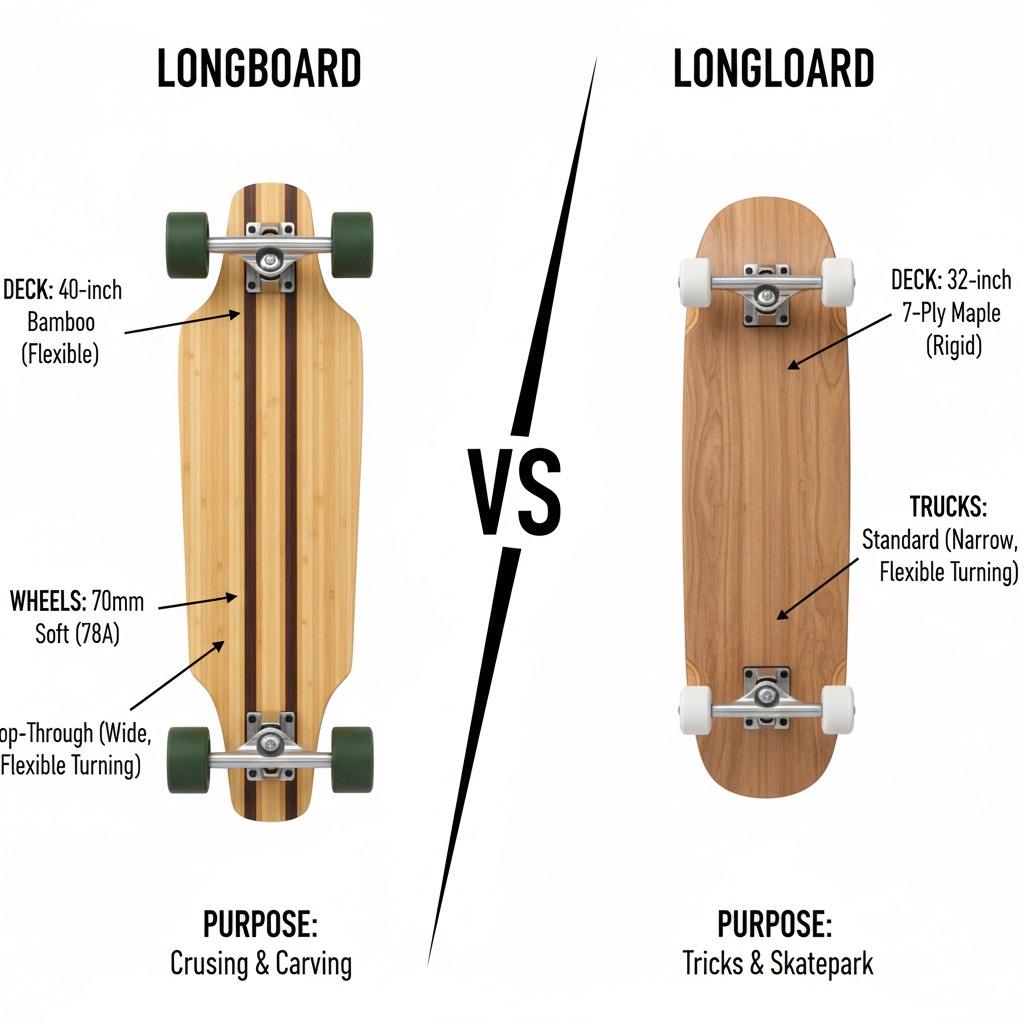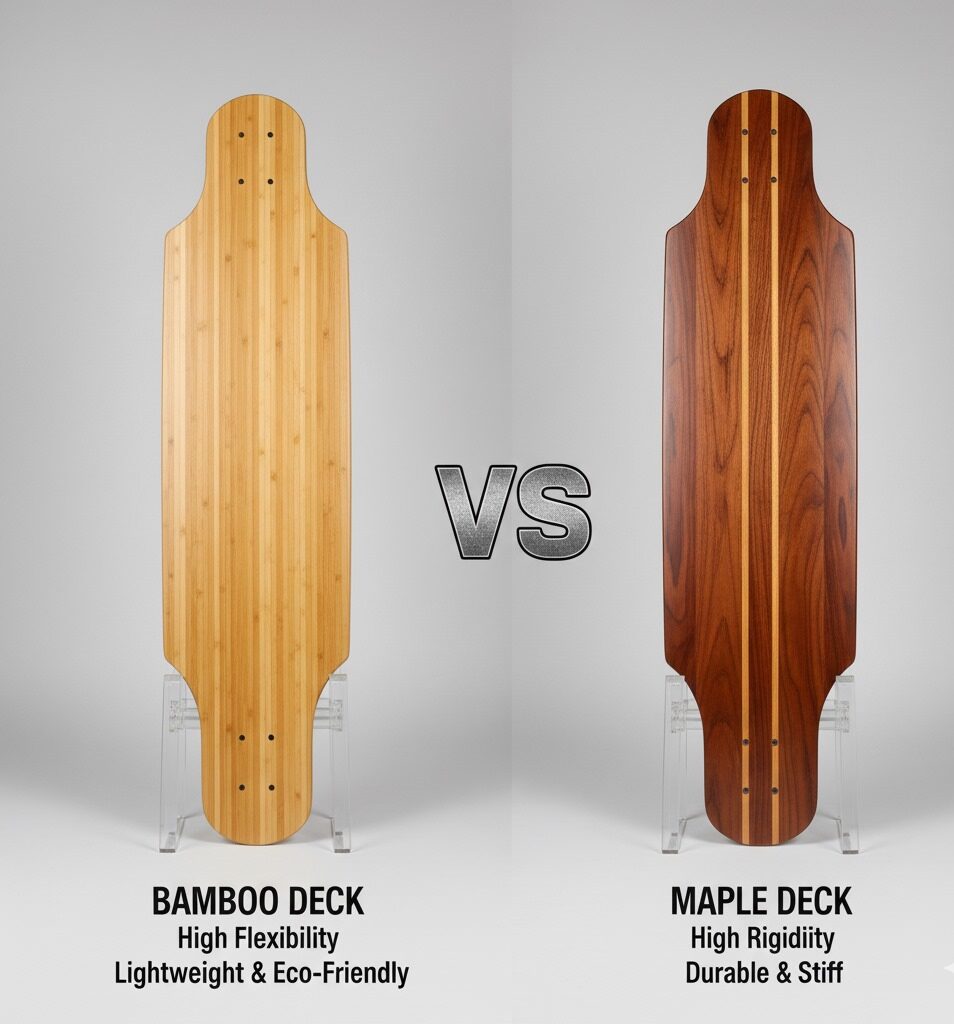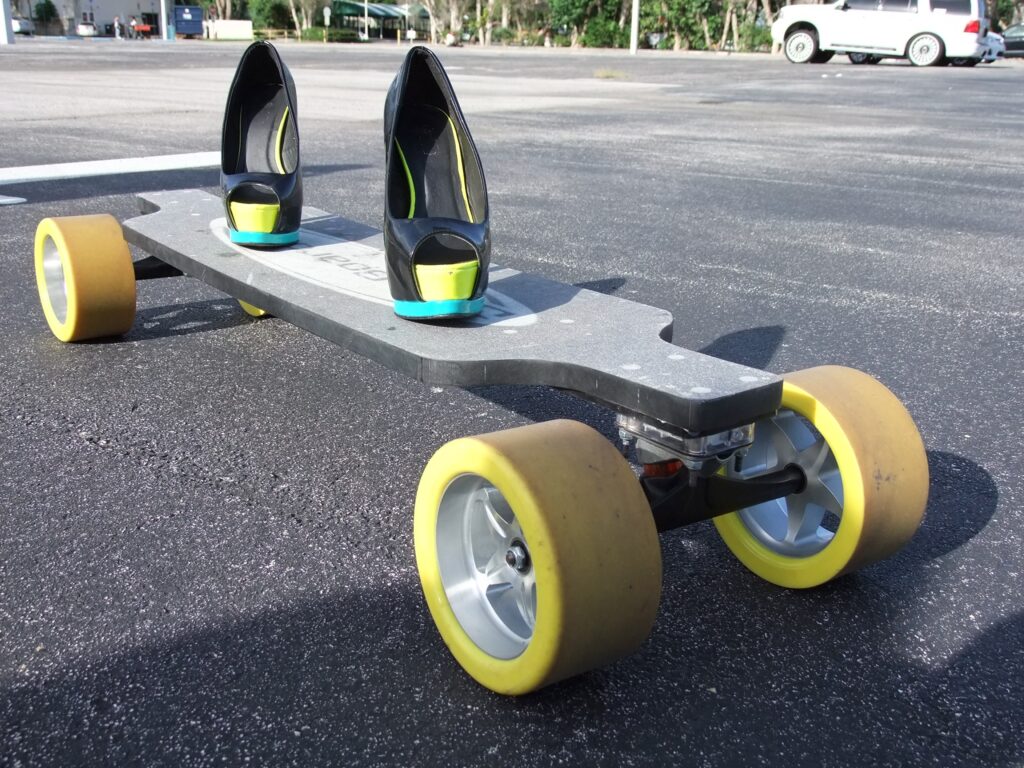Longboarding has always been about freedom — the glide, the flow, the connection between rider and ground. But what makes a great longboard truly stand out isn’t just its design or wheels; it’s the material that lies beneath your feet.
Over the past decade, one material has redefined performance, flexibility, and sustainability in board manufacturing: bamboo.
Whether you’re a seasoned downhill racer or a city cruiser, choosing a bamboo longboard means investing in strength, style, and eco-friendly innovation. In this post, we’ll explore why bamboo has become the material of choice for modern longboard decks, how it enhances ride quality, and what makes it an environmentally conscious option for the next generation of riders.
- Why Material Matters in Longboard Design
The deck material forms the soul of any longboard. It determines how the board flexes, how it absorbs vibrations, and how long it lasts. Traditional longboards were primarily made from maple, a dense hardwood known for its strength. Maple provides rigidity and durability but often adds weight and lacks the natural flex that many riders crave.
As riders began demanding boards that felt more “alive” — boards that flexed, absorbed shocks, and returned energy — manufacturers turned to bamboo. The results were revolutionary.
A bamboo longboard combines performance and comfort with environmental responsibility, offering a smooth, energetic ride while reducing the industry’s ecological footprint.
According to Loaded Boards, bamboo has nearly twice the flexural strength of traditional hardwoods, making it ideal for high-performance longboard decks.
- What Makes Bamboo Special?
Bamboo isn’t wood — it’s actually a type of grass, and that difference is what makes it unique. It grows incredibly fast, regenerates naturally, and offers impressive tensile strength that rivals steel.
Key Characteristics of Bamboo:
- Lightweight yet strong — delivers stiffness without excess weight.
- Natural elasticity — provides responsive flex and shock absorption.
- Sustainable — grows without replanting and matures in 3–5 years.
- Aesthetic appeal — offers a clean, organic look with natural grain patterns.
The combination of strength, flexibility, and eco-efficiency makes bamboo an ideal material for longboard decks, especially for brands focusing on both performance and sustainability.
Fun fact: Bamboo can withstand more compression than concrete and more tension than steel — a perfect metaphor for longboarding’s blend of flow and resilience.
- Strength-to-Weight Ratio: The Science Behind the Flex

One of the most celebrated aspects of a bamboo longboard is its strength-to-weight ratio. Bamboo fibers are arranged in long, parallel strands, giving the material remarkable tensile strength without adding bulk.
Compared to maple or birch decks:
- Bamboo decks are 20–30% lighter on average.
- They offer superior flex rebound, meaning they return to their shape faster after compression.
- They maintain integrity longer, reducing fatigue cracks over time.
Why Flex Matters
In longboarding, flex determines how the board feels under pressure. It affects acceleration, stability, and comfort. A bamboo deck flexes naturally under your weight, storing energy and releasing it with each carve or push — much like a spring.
That’s why downhill and carving riders love bamboo: it absorbs vibration from rough pavement while still feeling snappy and responsive.
A maple deck feels rigid and “dead,” while a bamboo longboard feels alive — a smooth, rhythmic pulse with every turn.
- Sustainability: Riding the Green Revolution
Beyond performance, bamboo offers a major environmental advantage. In an age when sustainability matters more than ever, bamboo represents the longboard industry’s shift toward eco-conscious craftsmanship.
Rapid Growth and Renewability
- Bamboo grows up to 3 feet per day in ideal conditions.
- It can be harvested without killing the plant, making it a renewable resource.
- Unlike hardwood trees (which take 20–50 years to mature), bamboo matures in just 3–5 years.
This rapid renewability significantly reduces deforestation and carbon impact.
Low Environmental Footprint
Bamboo requires no pesticides or fertilizers, regenerates naturally, and captures more carbon dioxide than most trees.
When used in longboard construction, it provides a sustainable alternative to maple decks — traditionally sourced from North American forests.
According to Green Builder Media, bamboo absorbs 5x more CO₂ and releases 35% more oxygen than an equivalent stand of trees.
Waste Reduction
Many manufacturers now combine bamboo veneers with recycled composite layers to minimize waste. This hybrid approach creates durable decks while conserving natural resources.
In short: choosing a bamboo longboard isn’t just a ride choice — it’s a vote for environmental responsibility.
- Flexibility and Ride Comfort
If there’s one trait that defines bamboo decks, it’s their flexibility. Bamboo’s natural fibers allow the deck to bend slightly under load and spring back instantly.
How Flex Translates into Comfort
- Shock Absorption: Bamboo dampens vibrations from rough pavement, giving a smoother ride.
- Energy Return: The board flexes and rebounds, propelling the rider forward with less effort.
- Carving Flow: The deck’s bounce enhances carving rhythm, making turns feel like surfing on land.
This dynamic performance is why bamboo longboards are often preferred by riders who commute, carve, or dance.
Riders describe the feel as “buttery smooth,” with a natural rhythm that turns even city streets into playgrounds.
Rider Weight Compatibility
Manufacturers often tune bamboo decks by layering different materials like fiberglass or carbon fiber to adjust flex levels.
- Light riders prefer softer flex for bounce and comfort.
- Heavier riders benefit from stiffer bamboo composites for stability and control.
This adaptability allows bamboo boards to cater to a wide range of riding styles and body types.
- Durability and Weather Resistance
A common misconception is that bamboo decks are fragile. In reality, properly treated bamboo is highly durable and weather-resistant.
Layering and Lamination
Most high-quality bamboo longboards use multi-ply laminated construction, often blending bamboo with maple, fiberglass, or epoxy resin for added stiffness and protection.
This creates a moisture-resistant barrier that keeps the deck from warping or delaminating, even in humid climates.
Natural Resilience
Bamboo’s fibrous structure makes it naturally resistant to cracking and splitting. It also performs better under compression than traditional woods, maintaining structural integrity after heavy use.
As Sector 9 notes, bamboo decks retain their shape and performance longer than standard maple boards, even after years of daily rides.
- Aesthetic Appeal and Natural Design
Beyond performance, bamboo longboards are simply beautiful.
The natural golden grain, smooth texture, and subtle color variations give each deck a unique character.
Visual and Tactile Experience
- The fine bamboo grain provides a warm, organic aesthetic.
- Some manufacturers use clear grip tape to let the bamboo show through.
- The texture feels smoother and more refined than most painted maple boards.
Whether mounted with bright wheels or minimalist trucks, a bamboo longboard always carries a premium look — one that blends craftsmanship with nature.
Many riders compare the appeal of a bamboo deck to the feel of handcrafted surfboards — timeless, elegant, and connected to the environment.
- Hybrid Construction: The Future of Longboards
Today’s best longboards use bamboo composites, combining the benefits of bamboo with other high-tech materials like fiberglass, carbon fiber, or maple layers.
Popular Constructions
- Bamboo + Fiberglass: Enhanced flex and durability with lightweight resilience.
- Bamboo + Maple: A balance of stiffness and flexibility.
- Full Bamboo Core: Maximum sustainability and flex response for cruisers and dancers.
These hybrid setups ensure longboards can cater to specific needs — from high-speed downhill control to freestyle dancing fluidity.
The Loaded Dervish Sama and Landyachtz Bamboo Pinner are classic examples of hybrid bamboo construction — lightweight, responsive, and eco-friendly.
Performance Upgrades
Hybrid bamboo boards often include:
- Epoxy resin finishes for moisture resistance.
- Pressed camber profiles for energy return.
- Drop-through mounting for lower center of gravity and stability.
These refinements ensure bamboo remains at the forefront of longboard innovation.
- Ride Feel: The Bamboo Experience
What truly sets a bamboo longboard apart is the feel — a perfect blend of softness and control.
Smooth Carving
Each carve feels fluid and responsive, with just enough flex to absorb imperfections in the road.
Lively Response
When you push off or pump, bamboo’s natural elasticity propels you forward, giving the sensation of surfing on asphalt.
Quiet Ride
Softer bamboo decks reduce road noise and vibration, providing a calmer, more meditative ride — perfect for long cruises.
Lightweight Agility
The reduced weight means quicker acceleration, easier carrying, and better maneuverability — ideal for city commutes and freestyle movement.
Riders often describe the bamboo ride as alive — energetic, forgiving, and in sync with every movement.
- Why Bamboo Longboards Dominate Modern Design
In today’s longboard market, bamboo isn’t just a trend — it’s the standard for innovation. Brands across the world now feature bamboo lines that highlight performance, sustainability, and design aesthetics.
Key Reasons Bamboo Leads the Market
- Eco-friendly appeal attracts environmentally conscious riders.
- Superior flex and rebound enhance the ride experience.
- Lightweight strength improves maneuverability.
- Visual beauty sets it apart from traditional decks.
- Durability and longevity ensure long-term value.
Whether you ride for speed, dance, or casual cruising, a bamboo longboard delivers the perfect mix of form and function.
- How to Maintain Your Bamboo Longboard

Even though bamboo is tough, proper care ensures it stays in top condition for years.
Maintenance Tips
- Keep it dry: Wipe off moisture after wet rides to prevent warping.
- Store indoors: Avoid prolonged sun exposure.
- Tighten trucks periodically: Bamboo flex can loosen hardware over time.
- Clean bearings and wheels: Keeps your ride smooth and efficient.
A little upkeep goes a long way — especially with natural materials like bamboo.
- Final Thoughts: Ride Natural, Ride Bamboo
The rise of the bamboo longboard is no coincidence. It reflects a shift toward smarter, greener, and more expressive riding. Bamboo combines all the essentials of great longboarding — performance, beauty, and sustainability — into one incredible package.
If you crave a board that feels alive beneath your feet, glides smoothly, and represents an eco-friendly choice, bamboo is the material you’ve been waiting for.
Every carve, push, and roll becomes more meaningful when you ride something that respects both performance and the planet.
Bamboo isn’t just part of the board — it’s part of the future.

